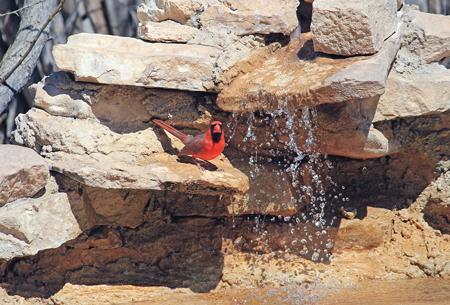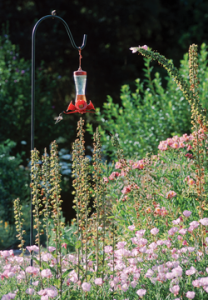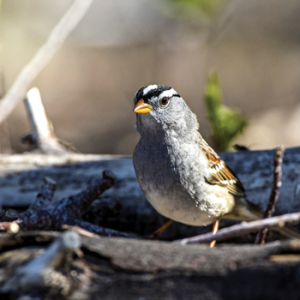
My wife’s and my yard is not manicured in “normal” fashion. No chemicals are used, and little seeding or sodding has been done. It is push-mowed. The wooded third of the property is not managed.
Given this setting, we looked at certifying our yard as a “wildlife habitat” through the National Wildlife Federation. It took just a little money, elbow grease, and a whole lot of reminding ourselves that the certification would have a positive impact. We went to the National Wildlife Federation website and found four requirements for certification: food sources, water sources, cover and breeding spaces.

Food Sources
Although nature provides a bounty, supplementing this food supply makes for many joyous days of wildlife watching. Adding a food source for animals also helps during a hard winter, a difficult migration, or even in times of overall habitat loss. Bird feeders, both ground- and pole-based, are excellent additions to the habitat. Also consider adding gardens of native grasses, fruit-bearing plants and nectar-producing flowers to supplement what forest and grasslands naturally provide.
Water Sources
A water source can be as simple as a birdbath or small fountain. Any relatively shallow basin will work. It is also suggested to add pebbles or stones to vary the water depth.
My wife and I added something grander than first anticipated: a backyard water feature. The combination waterfall and pond provides habitat for fish and frogs, a bathing place for birds, blooming lilies, a drinking water source for any living thing (including the family dog) and a source of sanctuary. Surrounding the water feature with native plants is advised; local nurseries are a wealth of information and assets. The contours of our yard provided a challenge to the pond designer, but working with the landscape minimized the impact. No chemicals are used in maintaining the pond. We add bacteria from time to time to help maintain pond health, but all algae control is done with the use of shade, proper filtration and a little elbow grease.
If mosquitoes are a problem, a small spinning mechanism can be added to keep the water moving. To keep water open in winter, either built-in or separate heating units may be used.

Cover
As beautiful as exposed, lush green lawns are they do not provide cover for birds or other animals. Consider planting native grasses, shrubs and trees. Only remove dead trees if deemed a safety or pest concern; otherwise, consider preserving decaying woody plants for animal habitat. Similarly, consider saving downed branches or twigs in brush piles.
Breeding Spaces
Mature trees provide an excellent breeding area for animals that prefer to be off the ground; and the undisturbed areas below trees give excellent cover to animals that prefer to breed on the ground or below ground. Natural tree cavities afford a good breeding space for cavity-nesters, but if your trees don’t have them you can purchase bird and bat houses of various sizes. These houses also encourage flying creatures (and squirrels) to settle in and breed.
Conclusion
The National Wildlife Federation recognizes our property as a Certified Wildlife Habitat and an Advanced Bird-Friendly Habitat. The latter consists of nine requirements, including: providing year-round open water, installing native plants, removing invasive plants, eliminating insecticides, keeping dead trees, providing brush piles, offering food in feeders, maintaining nest boxes and reducing lawn area. With the guidance of the National Wildlife Federation programs, our much-loved yard is now shared with wildlife and achieves important conservation goals. My wife and I encourage you to create and share habitats for all creatures great and small to enjoy. ν
For more info., visit: www.nwf.org/Get-Outside/Outdoor-Activities/Garden-for-Wildlife/Certify-Your-Wildlife-Garden.aspx. Adapted from an article about creating a certified National Wildlife Federation backyard habitat by Mark Newstrom and Michelle Cook.

Article by Guest Columnist MARK NEWSTROM
Reprinted from our May/June 2015 Edition of our Bird’s-Eye View Newsletter

